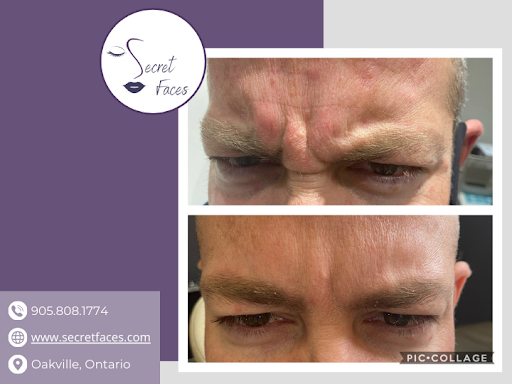Stress, Wrinkles, Bruxism and Botox! How do they all go together??
- Darlene Walchuk

- Jul 6, 2023
- 3 min read
Updated: Aug 29, 2024

Stress
When you experience stress, your body releases cortisol, a stress hormone. Elevated levels of cortisol can have adverse effects on your skin. Stress can indeed contribute to the formation of wrinkles.
Chronic stress can lead to collagen breakdown that provides structural support to the skin. Collagen helps keep your skin smooth and elastic. When collagen is damaged or depleted, wrinkles can form more easily.
Stress can affect the elasticity of your skin. When skin loses its elasticity, it becomes less able to bounce back and is more prone to developing lines and wrinkles.
Stress often causes facial tension, leading to repetitive facial expressions such as furrowing the brow, squinting, or frowning. Over time, these repetitive motions can contribute to the formation of fine lines and wrinkles, particularly in areas like the forehead, between the eyebrows (glabella), and around the eyes (crow's feet).
Stress can also lead to Bruxism
Bruxism is the unconscious grinding and teeth clenching that mainly occurs while asleep and contributes to the formation of wrinkles in some individuals.
It primarily affects the appearance of wrinkles in the lips and the area around the mouth.
The repetitive and forceful jaw movement due to Bruxism can strain the muscles around the mouth. This strain can cause the skin to crease, leading to the development of wrinkles.
Botox
Botox injections, more commonly associated with cosmetic procedures, can also be used therapeutically for various medical conditions, including Bruxism.

Here's how Botox can help with Bruxism:
Muscle relaxation: Botox temporarily blocks the signals from nerves to muscles, causing muscle relaxation. When injected into the jaw muscles involved in Bruxism, it can help reduce the excessive muscle activity responsible for teeth grinding and clenching. By relaxing these muscles, Botox can help alleviate the symptoms of Bruxism.
Decreased muscle strength: Botox injections can also reduce the strength of the jaw muscles, making them less able to exert excessive force during teeth grinding. This can help protect the teeth from further damage and reduce jaw pain.
Diminished muscle hypertrophy: Bruxism can lead to hypertrophy or enlargement of the jaw muscles due to constant muscle activity. Botox injections can help prevent or reverse muscle hypertrophy by reducing muscle activity, leading to a more balanced and aesthetic appearance.
It's important to note that Botox for Bruxism is a temporary solution, as the effects wear off over time. The typical duration of its effectiveness is around three to six months, after which additional injections may be required to maintain the desired results.
Suppose you are considering Botox as a treatment for Bruxism. In that case, consulting with a qualified healthcare professional is essential. They can evaluate your specific condition, determine the appropriate dosage and injection sites, and discuss potential risks and benefits to ensure Botox is a suitable option.
Whether you are looking for relief from the effects of Bruxism or want to treat fine lines and wrinkles, Botox is a solution to consider.
At our complimentary consultation at Secret Faces, we first assess your area of concern. Based on your medical history and goals, We ensure that the BOTOX® Injection treatment is suitable and safe for you.
We then strategically point out the treatable areas and begin the injections.
The three approved areas for Botox are -
- frown lines (11's),
- forehead lines, and
- crow's feet.
Other areas include lip lines, dimpled chin, and bunny lines, and they can also be used for facial shaping or teeth grinding (Bruxism).
Darlene, the owner of Secret Faces, is a registered nurse and customizes each treatment, and the overall experience is just as essential to Darlene as the outcome.








Comments